On making zines with Aqui Thami
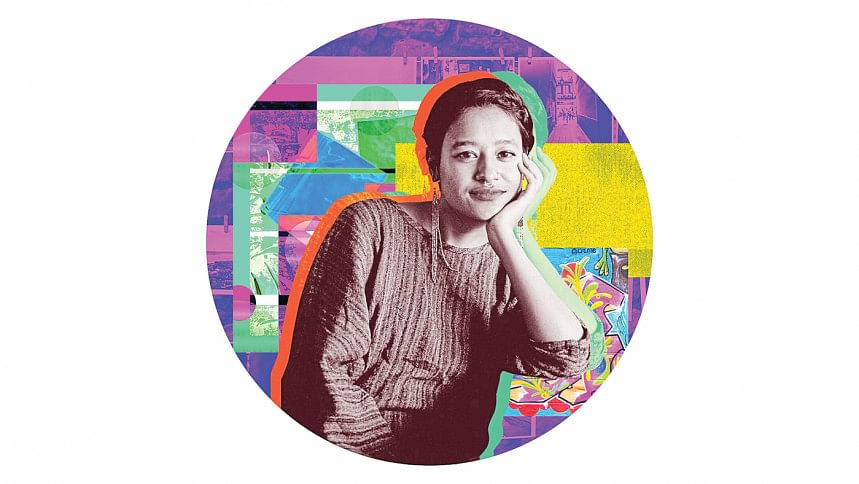
Last week, Star Books and Literature sat down with Aqui Thami to discuss zines. Thami is Thangmi woman of the Kiratimma first peoples of the Himalayas. A big believer in social exchanges and developing safe spaces to position art as a medium of healing in community, Thami works on ceremonial interventions, performances, drawings, zine-making, fly posting, and public intervention, brought together by participant involvement. Most of her work is self-funded and realised in collaboration. She is the founder of Sister Library, the first travelling, community-owned, and community-run feminist library of South Asia.
Katerina Don, curator of HerStory Foundation and host of Sister Library Dhaka was also a part of the conversation.
Could you tell us a little bit about how the Sister Library project came to be?
We started Sister Library about five years back. Back then, when I was invited to come to the library, I got around 100 books and on my way out I took them back with me. The idea of having a library in Dhaka was created from there. There was always a desire to share what we have in our libraries in Bombay with the other libraries that Sister Library has extended to around the world. Except for Dhaka. Every other sister library has a collection of works from the library, but for some reason, things never worked out for Dhaka. It was around last year that we started planning to bring a collection of 100 books to Dhaka. Sadly, the books have not yet arrived due to certain complications, but I have been insisting that the books make it to the library in time.
How did the zines come to be a part of the Sister Library project?
The zines are a vital part of the library in Bombay. They are very intrinsic to the suffrage of this movement. And it has the sort of freedom that is so important to women during creating and writing. Zine-making is entirely upon you. You can mix images with text, or you can just have text. You can have a small zine or a big zine. You have full control. This makes the medium really exciting due to its radical nature. It's always been something that I have mindfully used and shared with communities who need this mode of expression.
I was really happy to be able to put together 100 zines and send them to Dhaka. I love that it touched so many hands and was passed around and read. That's the nature of zines, isn't it? They're made to not last. They're made to be passed down from one person to another. They're made to be touched by hands. To be read, loved, discussed, and then to go away. So, I hope that happens. If these 100 zines touch many, many people and inspire more women to make more zines, then this can be replaced with a new wave of zines. It doesn't mean that the physicality of it goes away, that the zine goes away. It's a lot like the travelling library. Not having a physical space or presence, and having to travel to different spaces, doesn't mean that it removes the essence of the library. Once we're there, there's something that's established. A fire that burns and that grows brighter.
When you were curating a 100 books and a 100 zines for the chapter in Dhaka, what was the thought behind it? Zine-making has been a staple in a lot of resistance movements—could you tell us a little bit more about that might have influenced your curation?
A collection from every space comes to be curated depending on the interaction that I have with the city and how the city has held me. I've not had a lot of experience in Dhaka; it was maybe 10 days at most but I had a very, very nice time. It was a very soft landing space because I was dealing with a lot of emotional turmoil at the time. So, to be in a team of wonderful sisters, I felt very held.
There's such a rich history of feminist resistance in Bangladesh. And yet I felt like there was a gap between the young ones and the older feminists. I also felt how little we knew about each other and what was going on with these movements within the South Asian community. So, the desire was to bridge these gaps and to have content that is also slightly more universal—the collection has some zines that are from different parts of the world and a lot that we have produced in South Asia. There's also some DIY instructions for organising and resisting. I wanted to include lots of different ideas and philosophies, more contemporary works, and also feminist history. You'll find happy images, and even pictures of each other that I would want the visitors of the library to look at and witness.
Zine-making isn't just about making them. It's an entire ecosystem that consists of creation and then circulation. This really sets it apart from the commercial art market. And because of how it functions, it has become a great space for poor people, thinkers, doers, creators, and for people who want an alternative way of being. For those who want to live in an alternative universe, and those who are exhausted by the market economy. If you look at Western history, you'll see that the emergence of zine-making was more solidified during the feminist movement but also during the punk movement. But this is the Western version of it. In the global majority, we all have our own versions of independent publishing and circulation. We may not have always called it zine-making, but as far as humans have existed, we have had the desire to make art and show each other.
As you mentioned, zine-making is an alternative form of not only storytelling but radical political activism. How do you envision the zines that are particularly about radical feminism to function in a Bangladeshi context? How do we allow zines to navigate the rather contested terrain of feminist scholarship and activism in Bangladesh?
Zine-making is going to offend people because it is demanding a shift in power. It is emboldening women to take up space and reclaim life. So, it is always going to be contested. I live for the day when it will be mainstreamed, but it's not going to be because the patriarchy lives!
How do we take up space? I think there has been a very active effort into appropriating zine culture because the mainstream, the market economy, and the art industrial complex love radical things and want to soak up everything that is radical. And zines have that possibility because they make you feel. They require action.
But I think it's because of this appropriation that we are experiencing some changes in the movements of zine communities around the world. We can see that zines have changed. They are no longer made on the kind of paper that they used to be. They are meant to be easy to make. You're not meant to need skills, or have to go to art school or design school. It's not meant to intimidate but inspire. But we're seeing this shift. For instance, since the appropriation of zine culture has taken place around the world, I've been invited to curate collections in museums and libraries that I have respectfully declined.
There is a risk to making things mainstream as well. Do we even want it to be mainstream? What has the feminist movement come to that it is now being appropriated by the market economy? I think that instead of having more women feel the sisterhood and connect with each other, what the mainstreaming has done is it has created so many more haters, including women who hate. I think this is because the groundwork isn't done.
We have to remember that we have a great gift as far as the feminist movement is concerned, and the gift is that although it was a physical movement, our foremothers have left us with the treasure of text—in the forms of zines, discourse, writing, and conversations. There's so much to learn. Such a rich history. And that's where the Library comes in. That's why I want the Library in Dhaka. And I want the Dhaka chapter to have a collection that is like the library in Bombay: feminist theory books, books about various women, articulations about movements around land, and ones about culture. Anything involving radical feminist discourse is so relevant to the South Asian context.
It's a lot to think about. Finding a place in the mainstream. Or just existing in a parallel universe.
We would love to know a little bit about how you came to zine-making.
My dad would write a lot about the indigenous resistance and land back movement, print pamphlets, and distribute them. I think that stayed with me when I came to Bombay. But I never thought of my dad or aunt and uncle as zine-makers because of how different it seemed. Our processes were completely different. I have more pace and grace to sit with the work and bring it to life. That never happened with my dad. He used to make these publications so people knew what was happening, what the military was doing, what the government was trying to say. He would even reproduce speeches. He used to write speeches that he made and print it and distribute it amongst people. And there was one uncle who had an offset printer and even through the curfew, my dad would come home with these zines (or pamphlets or publications). He was in his 30s then and now, I'm finally getting the chance to reconnect and look back. So that was my first interaction with publication.
And the first work that I started doing as a part of Bombay Underground is where we used to make monthly zines called A4 where we would invite people to send in entries and put it together and publish it. And you know once you have your writing or drawing in print, and you hold it, something shifts in you. So everyone would send them in and they would be crying. There was so much gratitude. From A4, we built up to the contemporary zine movement. Because there were no zine makers before that and so we had to slowly show that this is a possibility. And we got to see Bombay becoming this place where people wanted to print and publish.
Hoards of people still continue to write to us with the possibility to publish. And then we have to keep clarifying that it won't be a zine if we publish it. And that they need to do it themselves in order for it to qualify as a zine. And we got lots of questions regarding how to do that. We even published a zine about zine-making titled 'zine kya hain' so that people know what it means to be a part of the zine ecosystem, what it means to be a zine maker, and how your place is so important in the world despite what you are told. After that, the first zine that I seriously made that was entirely my own, was Bhuju, about my grandmother. It came to me all at once and I made it one night. The next day I went to the supermarket and printed it and now I think we've sold over 3000 copies of it.
What is your vision for zine-making and Sister Library going forward?
I experienced a lot of conflict and dilemma when I left the Library in Dhaka, because the Goethe Institute has a certain kind of language and community. I come from a working class background and am indigenous, and I want the work to be accessible to more people. That's why the library in Bombay is a very soft space, held by the community. We don't have a big staff, and everything is run by volunteers. We have people from different socioeconomic backgrounds with different language capacities, who are still able to engage with the work. People who are able to sit together, look at each other, to be in the presence of each other.
I think this is so important. Especially with the rigid social hierarchies in South Asian communities, it has become more and more difficult for women. First they aren't public; secondly, it becomes so difficult for women from different socioeconomic realities, caste realities, or religions to sit together and witness each other. I think these are all tools that are in operation to keep us divided.
But when we sit together and look at each other, we realise the enemy is the same. We are fighting at different levels, but the enemy is the same. And this is how we establish sisterhood and solidarity. We can develop empathy for each other, and see each other. And this is, I think, one of the biggest drives I have to do work of this nature and make Sister Library so that we can witness each other. So we can have that exchange.
And when it comes to zines, because of their nature and what they're meant to be, I hope it extends to a larger community of all kinds of women, especially indigenous women! That's my hope, dream, and prayer.

 For all latest news, follow The Daily Star's Google News channel.
For all latest news, follow The Daily Star's Google News channel. 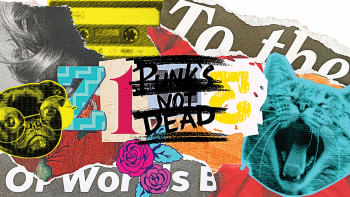


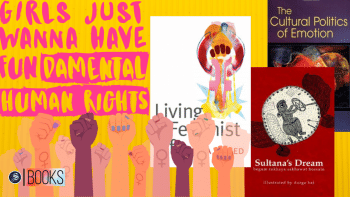


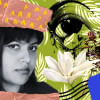
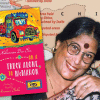
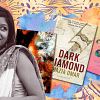




Comments